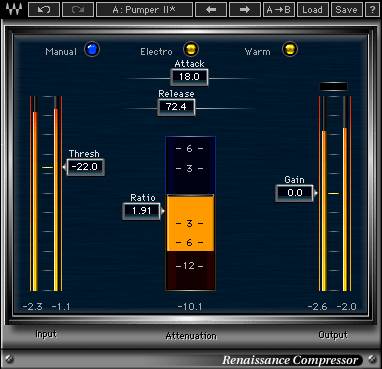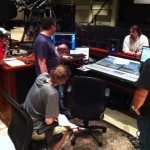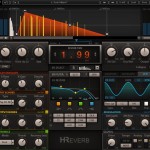
Icing on the Dynamics Cake

When I talk to other engineers about live mixing, inevitably somewhere in the conversation we start talking about “that record sound” or “that studio sound”. Sometimes we’ll talk about it positively, and other times negatively. But what is “that sound”? What is it that makes something sound like a record?
For a long time, I attributed the sound of a record to buss compression. I think that was largely because it was around the time I figured out how to properly use buss compression that I began perceiving my mixes as sounding like a record. These days, however, I’m not so sure that’s really it. Bruce Swedien, for example, is known for saying, “Compression is for kids,” and his work definitely sounds like a record. I believe buss compression definitely contributes to the sound of many of the records I love, but I don’t think it’s necessarily the key ingredient.
These days I attribute the sound of a record primarily to two main ingredients:
1. A Balanced Frequency Spectrum
2. Even and Level Playing
However, these aren’t limited to just the sound of a record. These are really two of the main ingredients in something bigger: the sound of professionals.
Today I want to focus on that second ingredient so what do I mean by “even and level playing”?
I believe the sound of a record features a performance with even and consistent dynamics. Perhaps a better way to understand what this encapsulates is to talk about the opposite end of the spectrum.
Imagine a brand new piano student practicing in his living room. He’s working on a piece where he’s playing chords in quarter notes. He’s struggling to read his sheet music, and as each chord change approaches he plays a little softer. He’s trying to translate the score in his head to figure out what the next chord is going to be. When he figures it out his focus goes back to the instrument, and he HAMMERS that change before coming back down to a reasonable level which then begins to drop as the next change approaches.
Does he sound like a pro? Of course not. He’s just learning.
The reality I encounter while mixing is all musicians land somewhere between that new music student and the “ultimate professional”. Hopefully they’re closer to the “professional” side of the scale, though, because the more “professional” the band plays, the more it will sound like a record.
So how can we, as engineers, help our band(s) sound more professional or more like a record?
Oftentimes I think there is a knee-jerk reaction from engineers to employ copious amounts of compression to deal with things in an attempt to achieve a more record-like sound to their mixes. To me, this approach is part of “the magic box syndrome”. A compressor is certainly a tool in the toolbox, but did you notice how I framed the question? How can we help “the band”?
Personally, I believe most dynamics issues are primarily source issues because we’re talking about musicianship. So, check this out.
Recently, several mix tutorials and mix deconstructions were made available showcasing the work of one of my favorite mix engineers, Chris Lord-Alge. I’ve had the opportunity to view some of these, and one of the most repeated things I hear from engineers after watching these is how surprised they are at the amount of compression CLA uses. CLA is an engineer with a reputation for hammering things, and while I have no doubt he isn’t afraid to get extreme when called for, the truth is he doesn’t use nearly as much compression as most people think. On the contrary, the thing myself and many other engineers note is when he pushes the tracks up in these tutorials for the first time, they just sit together because they have very even dynamics to begin with. Compression then becomes icing on the dynamics cake in the mix.
Something to keep in mind is having compressors available for every instrument is really a modern phenomenon. In the recording world, the top studios really only had this functionality beginning in the 80’s when high-end, large format consoles such as the SSL began including them. In the live world, we’ve only started seeing compressors available on every channel within the last 10 years as digital consoles have become ubiquitous.
So what did engineers do before we had all these compressors? We dealt with the source.
You see, an overly dynamic performance is a performance issue. In our audio engineering vernacular, that means it’s a source issue. So the first thing to do in trying to correct this is to address things at the source. And how do we do this?
Very. Carefully.
Somebody needs to talk with the musician(s), and ideally that person should be someone the musician trusts. That might mean you as the engineer. It might mean a music director or worship leader. Maybe a fellow musician who plays the same instrument is the perfect candidate. The key, though, is to have someone he trusts do the talking so the conversation can be encouraging as these discussions can be sensitive for some players.
What if addressing the source alone isn’t enough?
Compression can definitely be a big help in evening out the dynamics of a performance, but keep this in mind: I see compression as a way to help someone across the finish line. Compressors don’t run the race for musicians.
While I can’t say I never use compressors to manage dynamics, I actually prefer using compressors more for shaping and impact than for controlling dynamics. I’ll have some thoughts on that in an upcoming article. In the meantime, use compressors as needed, but try not to lean on them as a crutch for musicianship that has room to grow.

 Previous Post
Previous Post Next Post
Next Post



Great article!
My digital board has compression/gating on each channel. Would you also use buss compression for live sound? Would this be on the mains or would you buss vocals and instruments separately?
I go back and forth on using buss compression for live sound, but these days I’m using it again whenever I can. I put it across everything when I use it. I know some guys who are very successful at doing the band and vocals separately, but that’s not my thing because I want the compressor to move everything when it’s working. One thing about buss compression, though, is I think you have to have a pretty good handle on using compressors in general before you start playing with it.
Interesting abt a musician’s dynamics. I would say that the beginners are actual less dynamic as they are unintentionally dynamic whereas the more experienced musicians are more dynamic but in an intentional/practiced way. The key is the intention. Beginners are just playing the right notes but the experienced musician is feeling the notes intentionally … As well as the arrangement of the song / creating the arrangement.